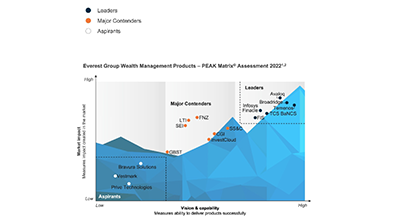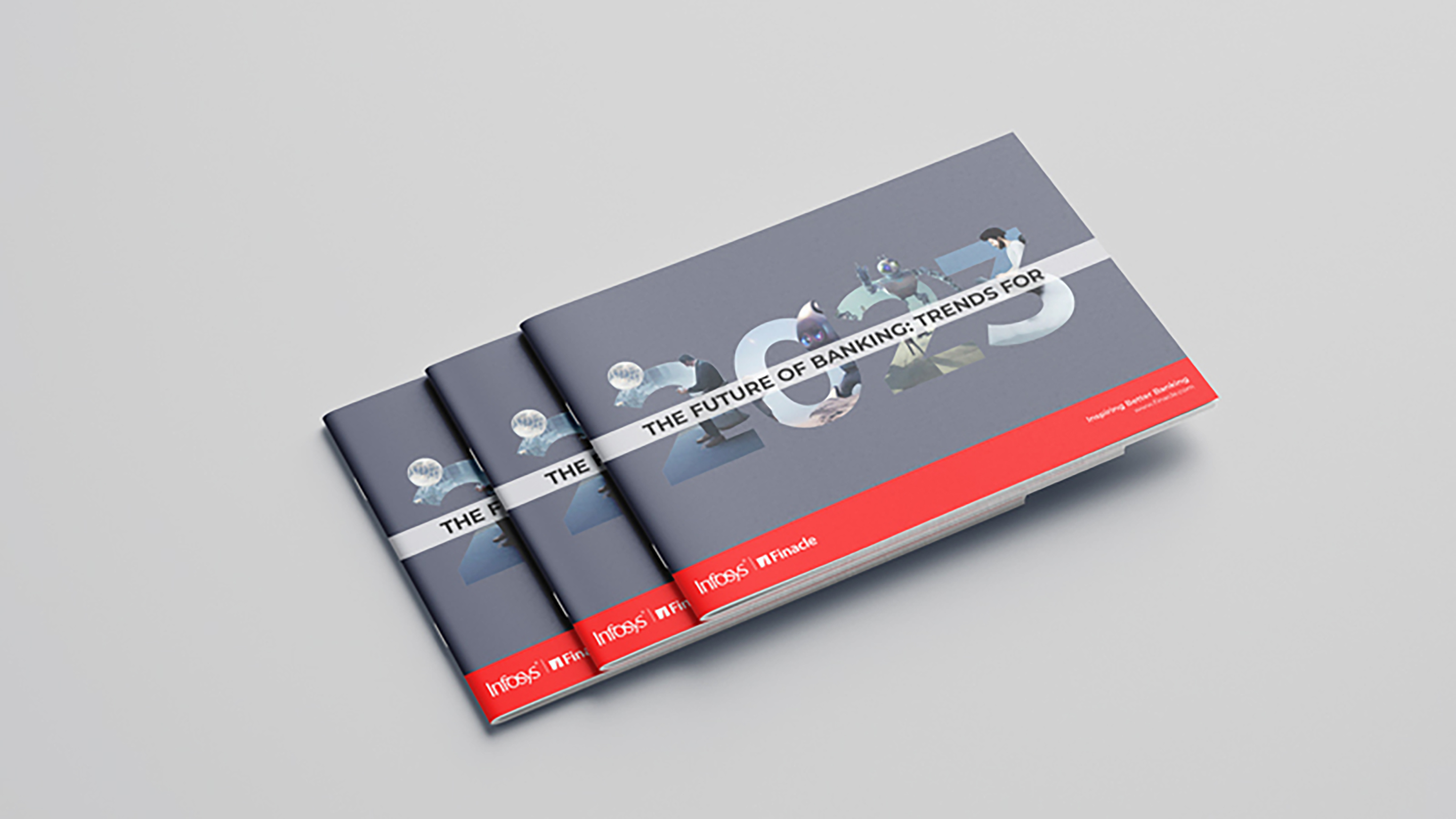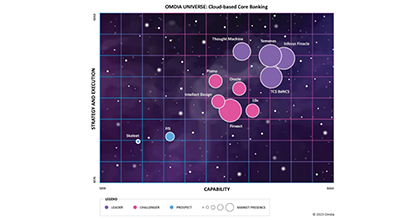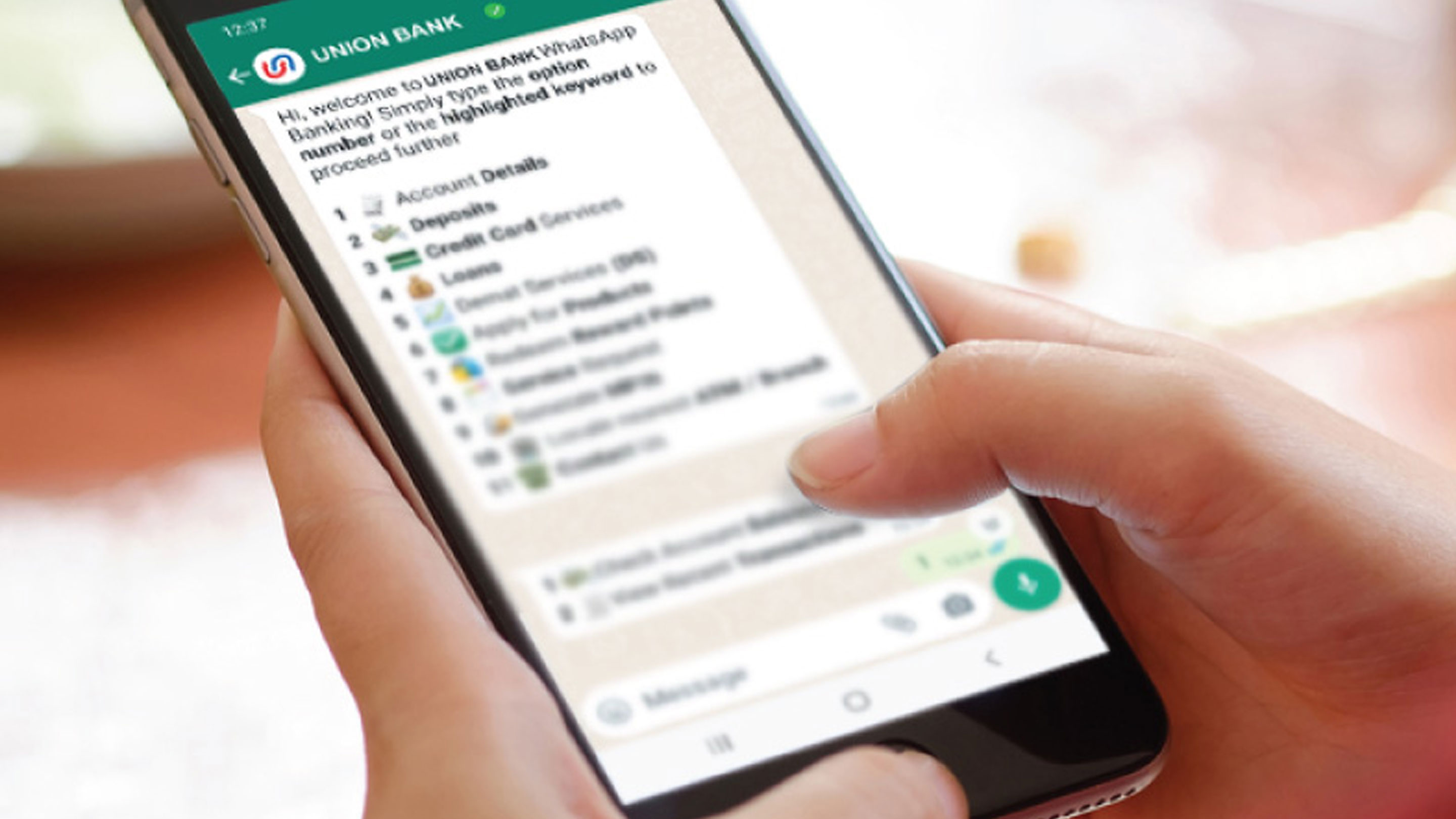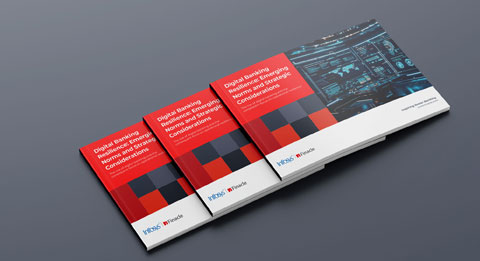-
![]() ESG in bankingESG-conscious banking should create new and future-proof value streams to build a sustainable and resilient business.Read More
ESG in bankingESG-conscious banking should create new and future-proof value streams to build a sustainable and resilient business.Read More -
![Everest Group PEAK Matri Everest Group PEAK Matri]() Everest Group PEAK MatrixA comprehensive solution delivering a full spectrum of wealth products as great experiences. It also improves the productivity of financial advisors and streamlRead More
Everest Group PEAK MatrixA comprehensive solution delivering a full spectrum of wealth products as great experiences. It also improves the productivity of financial advisors and streamlRead More -
![]() Subsidiary of an American Bank in IndonesiaFind out how a leading American bank adapts to a digitalized trade and supply chain finance operations as a part of its larger transformation by leveraging Finacle Trade Finance Solution Suite.Read More
Subsidiary of an American Bank in IndonesiaFind out how a leading American bank adapts to a digitalized trade and supply chain finance operations as a part of its larger transformation by leveraging Finacle Trade Finance Solution Suite.Read More
-
![]() Recomposing Banking: Leading the Digital ContinuumReport gives you a glimpse of the major areas where recomposing banking will create significant impact and value, Infosys Finacle has put together a report on..Read More
Recomposing Banking: Leading the Digital ContinuumReport gives you a glimpse of the major areas where recomposing banking will create significant impact and value, Infosys Finacle has put together a report on..Read More -
![]() Core Banking on Cloud: Navigating to the Fast LaneTake a deep dive into cloud-based core banking and explore the imperatives, opportunities and challenges, and the hallmarks of a robust solution.Read More
Core Banking on Cloud: Navigating to the Fast LaneTake a deep dive into cloud-based core banking and explore the imperatives, opportunities and challenges, and the hallmarks of a robust solution.Read More -
![]() Embracing Payments ComposabilityA step-by-step guide for maximizing Real Time Payment opportunities by embracing Payments Composability...Read More
Embracing Payments ComposabilityA step-by-step guide for maximizing Real Time Payment opportunities by embracing Payments Composability...Read More
-
![]() Shaping Banking’s Next: Banking Technology Trends for 2025 and BeyondThe banking industry has been balancing disruption and opportunity for several years now, and the pace of change shows no signs of slowing as we move into 2025 and beyond.Read More
Shaping Banking’s Next: Banking Technology Trends for 2025 and BeyondThe banking industry has been balancing disruption and opportunity for several years now, and the pace of change shows no signs of slowing as we move into 2025 and beyond.Read More -
![]() Virtual Accounts 2.0: Surpass Conventional Cash Management and Unlock Next-Gen PossibilitiesVirtual Account Management was a groundbreaking shift in the banking landscape, revolutionising use cases like cash concentration, pooling, centralised treasury management, and in-house banking (POBO, ROBO, COBO)Read More
Virtual Accounts 2.0: Surpass Conventional Cash Management and Unlock Next-Gen PossibilitiesVirtual Account Management was a groundbreaking shift in the banking landscape, revolutionising use cases like cash concentration, pooling, centralised treasury management, and in-house banking (POBO, ROBO, COBO)Read More -
![]() Unlocking Hybrid CloudAs banks push forward with their digital transformation agenda, cloud serves as a pivotal enabler. Each bank, at varying stages of adoption, crafts its unique path, dictated by context, regulations, and risk appetite.Read More
Unlocking Hybrid CloudAs banks push forward with their digital transformation agenda, cloud serves as a pivotal enabler. Each bank, at varying stages of adoption, crafts its unique path, dictated by context, regulations, and risk appetite.Read More
-
![]() Banking on CloudThis report from Infosys Finacle delves into the need for accelerating cloud adoption, highlights the current state of the industry, and puts forth key recommenRead More
Banking on CloudThis report from Infosys Finacle delves into the need for accelerating cloud adoption, highlights the current state of the industry, and puts forth key recommenRead More -
![]() Omdia Universe | Cloud-based Core BankingIn the report, Omdia highlights the following key capabilities of leading cloud-based core banking providers:Read more
Omdia Universe | Cloud-based Core BankingIn the report, Omdia highlights the following key capabilities of leading cloud-based core banking providers:Read more
-
![]() Emirates NBDEmirates NBD consolidates its operations on a single version for scalability, agility, and standardization.Read More
Emirates NBDEmirates NBD consolidates its operations on a single version for scalability, agility, and standardization.Read More -
![]() A Global Top 5 BankDiscover how a global top 5 bank headquartered in the US accelerated payments transformation.Read More
A Global Top 5 BankDiscover how a global top 5 bank headquartered in the US accelerated payments transformation.Read More -
![]() Union Bank of IndiaUnion Bank of India launches Union Virtual Connect (UVConn) by leveraging WhatsApp to provide customers personalized banking services.Read More
Union Bank of IndiaUnion Bank of India launches Union Virtual Connect (UVConn) by leveraging WhatsApp to provide customers personalized banking services.Read More

Digital Payments in India: Cresting New Waves Consistently
Blogs
India’s success story in digital payments is exemplary. Until 2015, while efforts were underway to bring about a shift, the digital payment landscape in India was nascent at best. Flash forward to 2022-23 and the payments story has transformed. So far in 2023, over 91 billion digital payment transactions have been recorded. Meanwhile, $1.5 trillion digital payment transactions were recorded as of December 2022 in India. This number is higher than the combined transactions recorded in the US, UK, Germany, and France.
The Story So Far
The move toward a cashless economy in India started nearly three decades ago with the introduction of online banking. However, the digital payments ecosystem received its first real boost when the Reserve Bank of India (RBI) set up the National Payments Corporation of India (NPCI) in 2008 to shape the payments infrastructure and enable innovations.
This underpinned the launch of IMPS in 2010 followed by the RuPay payment network, AEPS, UPI, Bharat QR, and NETC, and the Indian digital payments ecosystem forged ahead. The 2016 launch of the UPI, which enables instant real-time payment transactions based on a unique handle linked to a mobile number, can be considered the spark that ignited this journey. Since then, the volume of digital payments in India has grown by 50 percent annually.
As of Q3 2022, the UPI ecosystem, which includes 358 banks, saw over 19.65 billion transactions in volume and INR 32.5 trillion in terms of value, an 88 percent increase in volume, and over 71 percent increase in value quarter-on-quarter. UPI payments have now surpassed the usage of credit or debit cards in India, with a penetration of 40 percent, in comparison to 6% for credit cards.
The latest testament to UPI’s success is its global expansion. The NPCI is now enabling non-resident Indians (NRIs) to leverage UPI in countries such as Saudi Arabia, Singapore, Canada, Hong Kong, Oman, Qatar, the USA, United Arab Emirates, the United Kingdom, and Australia. In the EU, the NPCI has partnered with Worldline, a European payment service facilitator to enable the acceptance of UPI and RuPay.
The Indian government is also in the process of expanding UPI, RuPay, and the BHIM app’s functionality in several countries to simplify cross-border payment processing and strengthen interoperability. Recently, the integration between UPI and Singapore’s PayNow has gone live, allowing instant cross-border money transfers between the two countries. More such integrations are expected to follow, taking the impact of UPI to the global stage.
The Role of Partnerships and Innovation
This remarkable growth of digital payments led to over 7,000 fintech companies forge unconventional partnerships. Having previously viewed each other as competition, fintechs and banks now work together to unlock new use cases across the extended ecosystem. An interesting example is a UPI-enabled digital platform for end-users to access the National Pension System (NPS). Aware of the innovation acumen of fintechs and hoping to provide them with the appropriate guardrails, NPCI recently set up a partner program that could expand the frontiers of this payment revolution.
Under the banking-as-a-service umbrella, this innovation surfaces in the form of payment-as-as-service offerings. Taking it a step further, the fintechs M2P and Cashfree Payments now offer payments-infrastructure-as-a-service for any bank/fintech/third-party businesses to launch or embed payment offerings in their business.
The Way Ahead for India’s Digital Payments Landscape
While the journey thus far has been nothing short of impressive, Indian authorities have been mindful of the data security front, issuing a master direction in 2021. Toward tackling such concerns, in 2022, the RBI mandated that credit and debit card information used for online, in-app, and point-of-sale (POS) transactions be replaced with tokens, providing an additional layer of security, while improving user experience.
India is expected to account for 70 percent of global real-time payments by 2026. In addition, BaaS-led payments innovations will gain traction for their adaptability across environments. Exciting use cases will continue to be identified, such as the wearable payment solutions by Bank of Baroda in partnership with NPCI.
The RBI has also recently launched the digital rupee, India’s central bank digital currency, categorized as a legal tender in digital form. Eight banks have participated in this pilot project, which is expected to further foster the cashless economy ecosystem.
CBDC could help cut operation handling costs for settlements and help make cross-border payments seamless and independent of intermediaries. The expected UPI-like interface will likely drive CBDC adoption due to familiarity and ease of use. This in turn is expected to boost financial inclusion and smooth transfer of financial benefits.
The success of UPI has been truly inspirational. To augment the impact of this success and carry it forward to other industry spaces, the government of India, in association with industry bodies, has launched several new initiatives. Some of these initiatives include the account aggregator model based on the consent architecture, OCEN (Open Credit Enablement Network) to democratize lending and ONDC (Open Network for Digital Commerce) to drive decentralization of eCommerce.
This potent combination of collaborative innovation and robust regulatory steer in India will continue to drive growth and cutting-edge innovation for digital payments, not just in the country but globally.
The Indian payments story continues to radiate success and promise.
This article was previously published in the Economic Times.


©2025 -Edgeverve Systems Limited | All rights reserved

